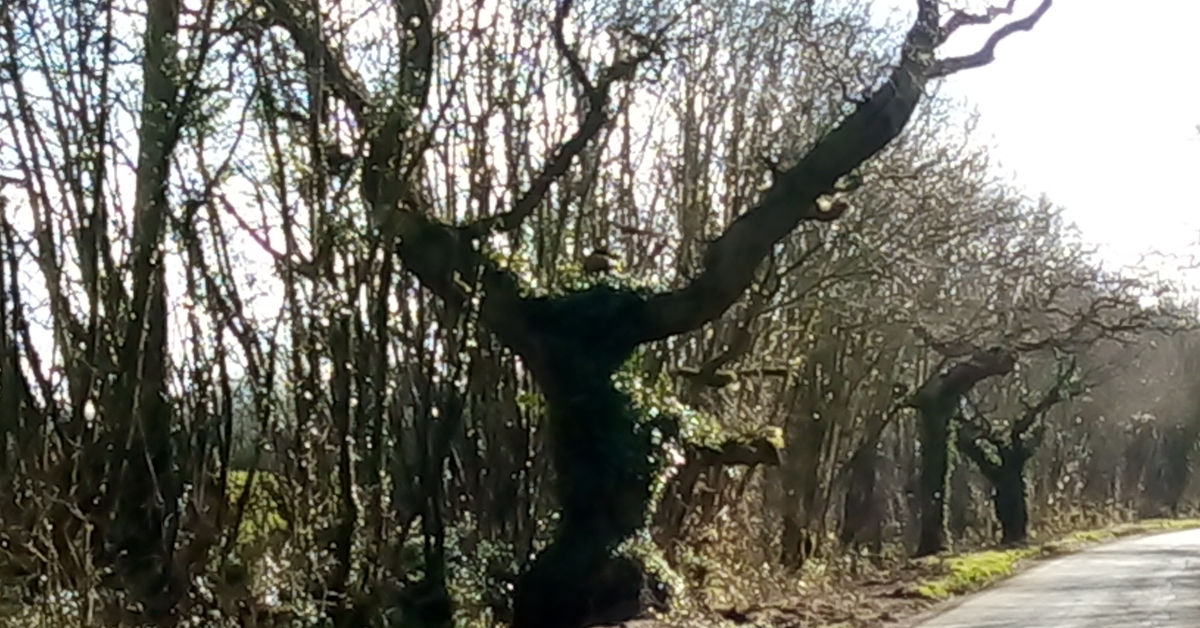At the top of the village, along the winding lane that leads out to the vale, stands the Dancing Man. He is oak, old and weathered, his limbs raised skyward. He is hard to see through the spring and summer, when he is festooned in his glorious coat of leaves, Come autumn and winter, he is easier to spot. There is always a moment of joy when I pass by. He is a reminder that there is celebration in quiet moments and stillness.
Who knows how many years he has been there, standing sentinel. Two hundred, maybe two hundred and fifty, I’m sure, probably more. His girth indicates he is old, although perhaps not so very old by oak standards. Oaks (at least, Quercus robur, the common oak) can live in excess of five hundred years, given the right surroundings; there are some that reach a thousand. He’ll have seen so many things, so many changes in those years; and yet some things remain the same. His boughs still welcome the birds. Bluebells crowd round his roots in the spring. Deer stand silently beside him at dusk and ivy curls around him, keeping him company with a hug.
His brethren have hidden outlaws and kings; they have sailed the seas as ships and provided shelter as houses; they have guarded the landscape and brought richness and reverence to so many.
When I stand by the Dancing Man, silently like the deer, I listen. I want to hear his stories, I want to know why he’s dancing there. Perhaps it’s silly, but at night, when the moon’s up and the owls are gliding beneath the stars, I like to imagine that he dances with them, a happy quickstep round the edge of the village before he takes up his position once more at the edge of the lane.
Izzy Robertson and The Team



